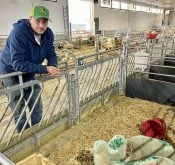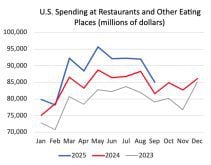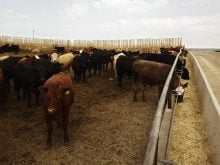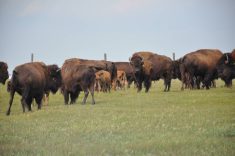REGINA – Stephen and Kristin Wielgosz’s Charolais bull program received a gold star of approval when they decided to show in the commercial barn rather than the purebred events at Canadian Western Agribition.
The result was winning the supreme champion pen of bulls among the five breeds on display.
Their three January 2007 bulls were all sired by SVS Nobleman and ranged in colour from tan to red. They have 15 bulls from this bull and have high hopes for the kind of calves they might produce.
Read Also
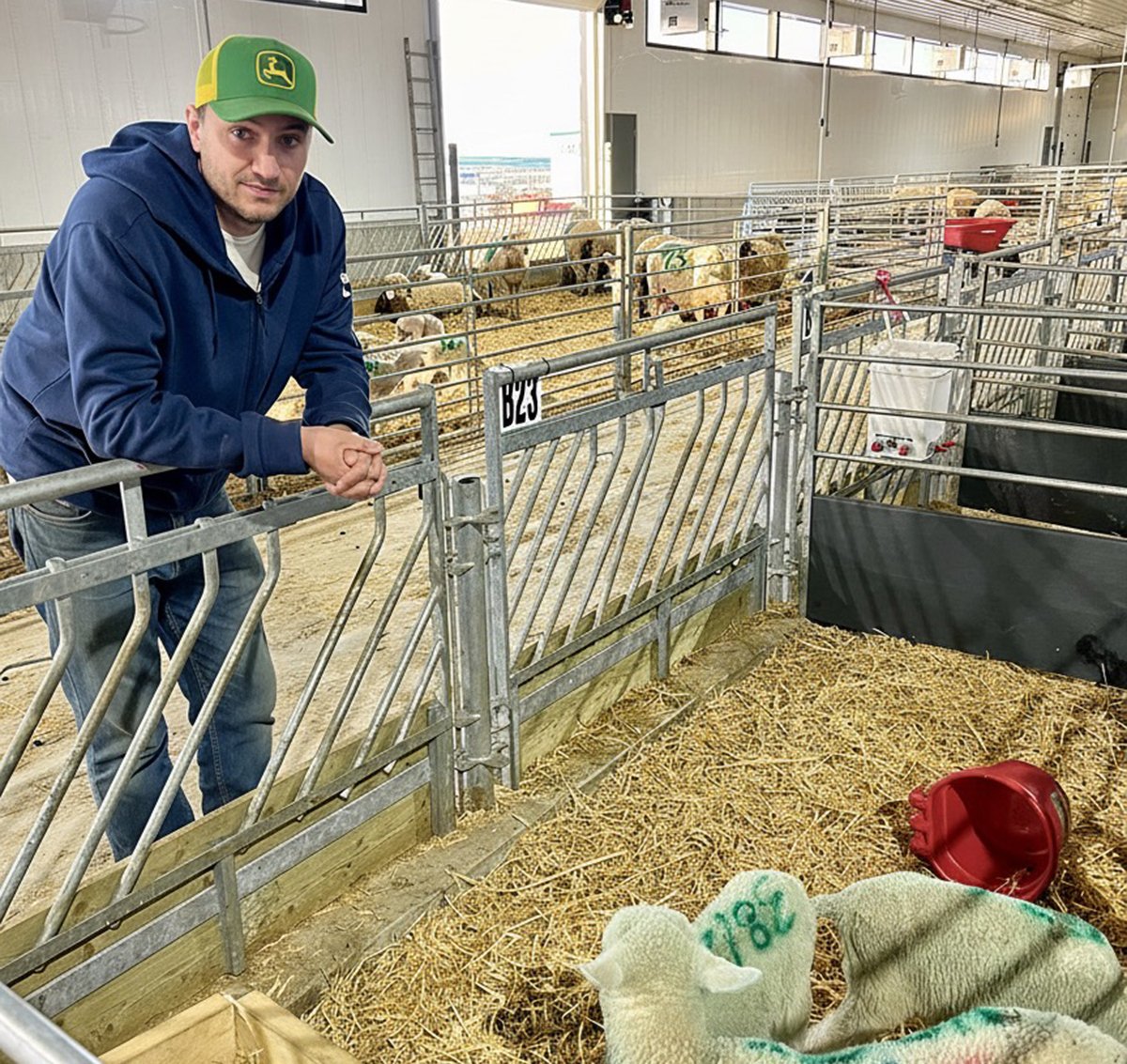
Solar, sheep provide valuable farm diversification
Eric Steeves says raising sheep on forages grown under solar panels provided economic stability and perhaps even saved his family’s fifth generation southern Alberta grain farm.
 r
r
“We are kind of excited to see if they turn out the same as these,” said Stephen, who farms at Yellow Creek, Sask.
Other people liked what they saw too, and before the show even started, the bulls were sold as a package to a commercial beef producer.
After this kind of response the couple plans to come back to this part of the show and are encouraging other purebred producers to consider this grassroots portion of Agribition where the animals are shown in their working clothes without clipping and coifing.
“Lots of people from the show barns really think this is a good thing to be in,” he said.
This pen of bulls weighs 1,140 to 1,190 pounds with thick, muscled bodies, long wavy hair coats and quiet dispositions. That consistency caught the judge’s eye.
“Uniformity is more important than the sire,” said Kristin.
Stephen has been in the business for about 10 years but his family has been involved with Charolais cattle for more than 30 years.
They also run commercial cattle using Charolais bulls on Charolais-Hereford cross cows so they have a feel for what the commercial beef producer wants.
As young producers they rely on advertising to promote their program, including a regularly updated website. But coming to Regina and shaking hands with a steady stream of potential buyers was a bonus.
“We expected to find new customers. We didn’t expect that kind of response,” he said.
Bull sellers like the Wielgoszes encourage cross breeding. One eye-catching cross is silver cattle, the result of crossing a Black Baldie cow with a Charolais bull.
With today’s low calf prices where people are still paid by the pound, such a cross adds meat quality from the Angus and growth from the Charolais, said Murray Blake of McCord, Sask.
His five silver feeder steers stood second in class to the reserve champion pen of five steers. Silver crosses have been part of his program for nearly 30 years when the family first started using Charolais.
“There’s so many black cows around in the industry, this is a good fit for Charolais,” said Blake, who runs Wood River Charolais with his wife, Nicole.
The colour resembles that of a dime.
“You’ve got the best of both worlds. You get the muscle and you get the growth,” he said.
At one point there was a bit of a discount for the silver cattle at the auction but they are growing in popularity and his four children have used them as 4-H steers that took them all the way to grand champion banners.
For Garon Pretty of Weyburn, Sask., with his grand champion pen of five replacement heifers, the commercial show not only promotes what he is doing, but allows him to check out the competition.
He won with Charolais-Hereford cross heifers that look like five golden peas in a pod. They weighed an average of 685 pounds.
He has been to this show before with steers and has won some banners in the past, but this was his first foray with females.
The group was part of the first calf crop for a new two-year-old Charolais bull used on Hereford dams. He buys all his bulls from neighbouring Beck Charolais because those bulls give him the kind of cattle he wants.
For Pretty, this is a show worth entering because the Canadian Hereford and Charolais associations provide prize money on top of what Agribition rewards them. It also provides a measure of his progress.
“It is worth it if you want to judge your herd against other people’s to see if you are going in the right direction,” he said.



